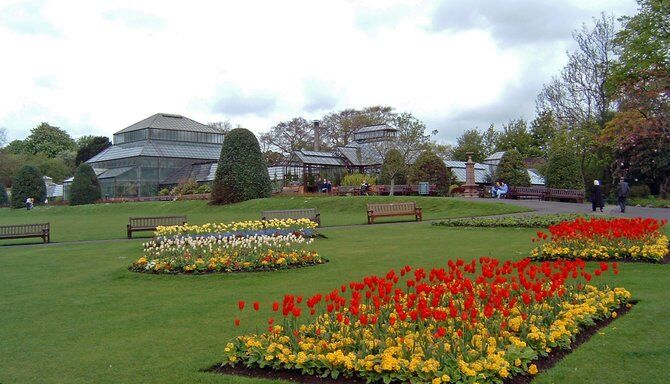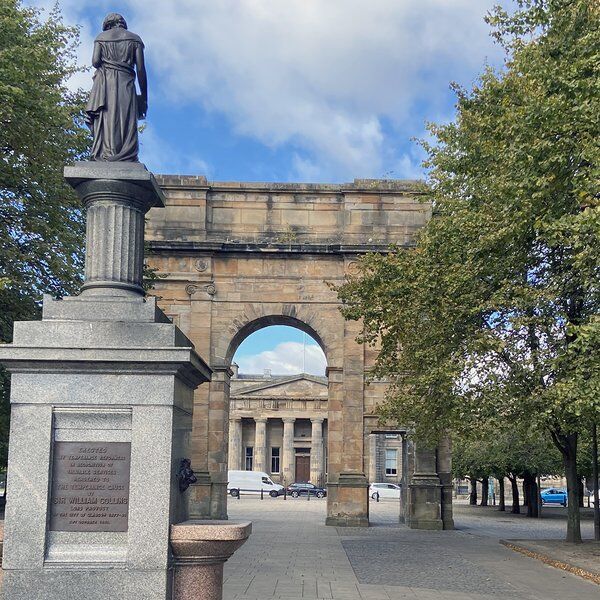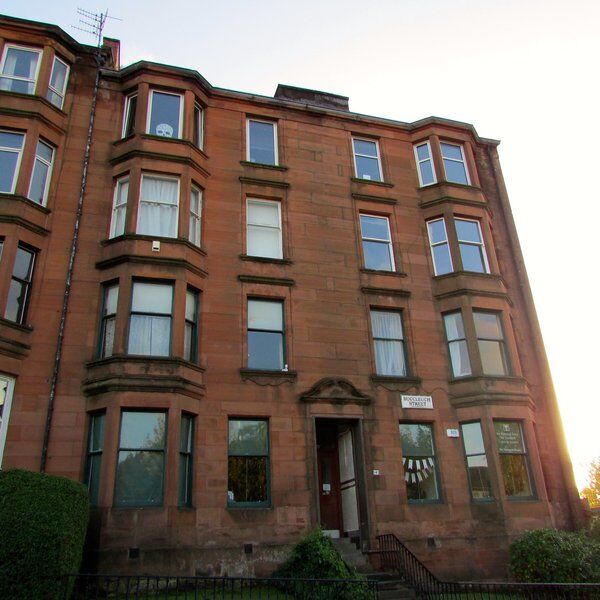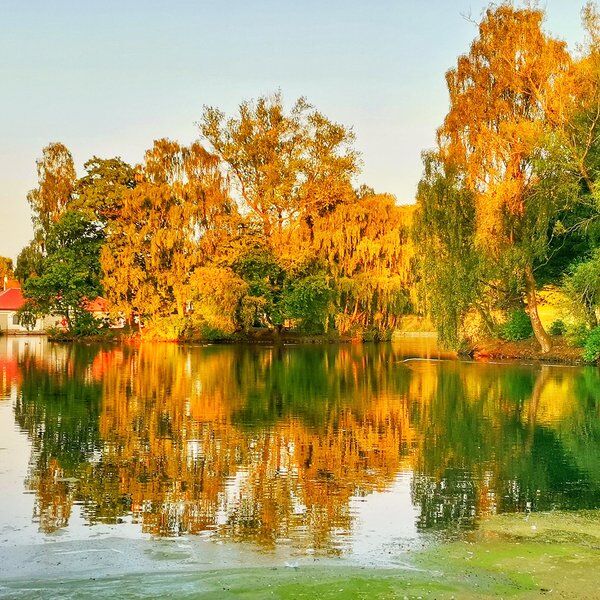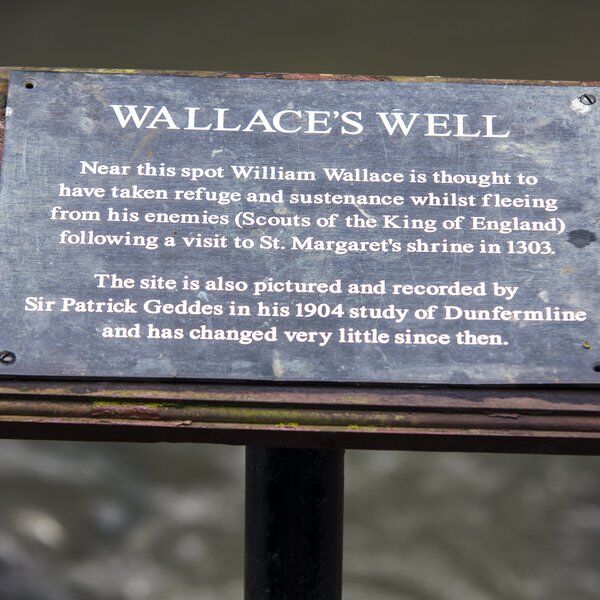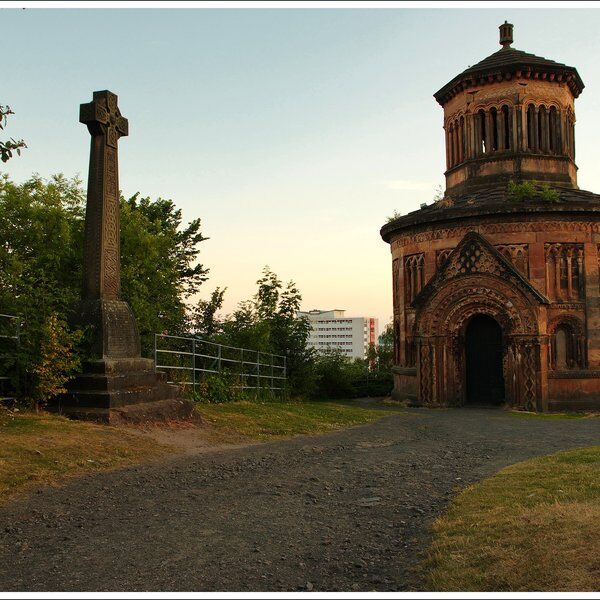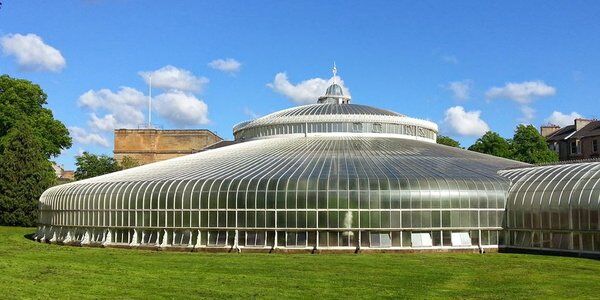
Exploring Glasgow Botanic Gardens
The Glasgow Botanic Gardens, managed by the Glasgow Corporation since 1891, are situated on the banks of the River Kelvin in the city’s West End. The gardens are home to an impressive variety of plants, ranging from temperate to tropical species, contained within several glasshouses. Among these glasshouses, the Kibble Palace reigns supreme, with some of its inhabitants having been there for over a century.
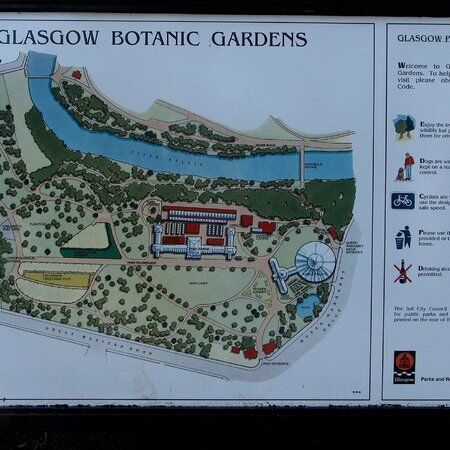
There are also themed gardens. A herb garden and a chronological bed, arranged to showcase plants introduced to Scotland over the years, provide insight into the nation's horticultural heritage. Meanwhile, the palm house has a colourful collection of plants from tropical rainforests.
Beyond its botanical wonders, the Gardens offer a range of amenities. The former curator's house now hosts a charming tearoom, inviting guests to relax and indulge in the garden’s peaceful surroundings. For families, a children's play area provides a space for young explorers to unleash their curiosity and creativity.
The Origins of the Glasgow Botanic Gardens
Glasgow’s Botanic Gardens were established at Sandyford, near Sauchiehall Street, in 1817, when Thomas Hopkirk, a distinguished botanist, joined forces with local dignitaries and the University of Glasgow. Covering about 8 acres, this initial site was intended to serve the university's botanical needs, with the Royal Botanic Institution of Glasgow overseeing its operations.
Under the guidance of the institution's first curator, Stewart Murray, and with a donation of three thousand plants by Hopkirk, the Gardens began to take shape. The appointment of William Jackson Hooker as Professor of Botany at the University of Glasgow in 1821 marked a significant milestone in the Gardens' development. During Hooker's residency the collection expanded rapidly, reaching 12,000 specimens by 1825.
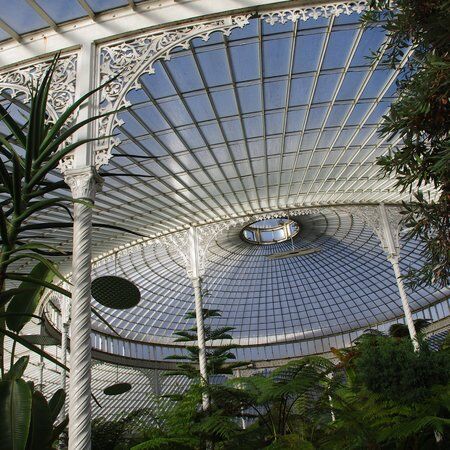
David Douglas, another key player in the Gardens' history, joined the staff in 1820 and later gained fame as an explorer, sending seeds of the Douglas Fir from North America in 1826. The Gardens' reputation continued to grow, but this necessitated a move to a larger site west of the city in 1939. By 1842, the Glasgow Botanic Gardens were relocated to their current location.
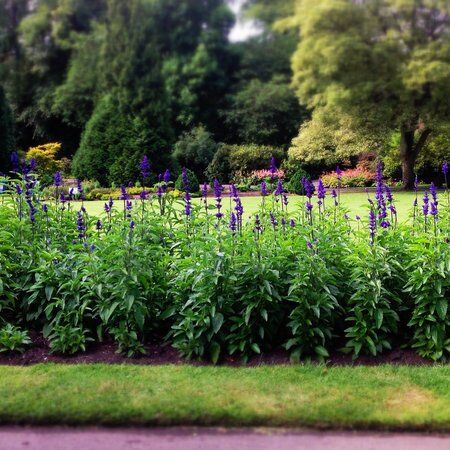
Inside the Glasgow Botanic Gardens
The Collections
Since their inception, the Gardens have been committed to showcasing specimens from around the world, resulting in a collection of over 9,000 different plant species. The majority of these specimens thrive within the temperate and tropical glasshouses, which visitors can explore. Moreover, the Gardens' extensive outdoor grounds, spanning over 20 hectares along the picturesque River Kelvin, invite exploration and appreciation of hardy trees, arboretums, herbaceous borders, and landscaped gardens.
As a proud member of Botanic Garden Conservation International (BGCI) and Plant Network, the Gardens actively collaborate with other botanical institutions to advocate for plants' importance and promote responsible acquisition, distribution, and management of plant collections.
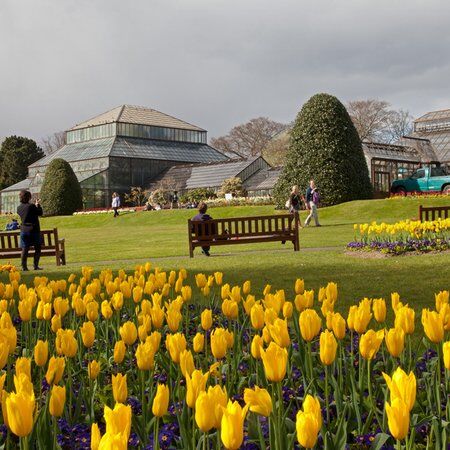
Tree Trails and Self-Led Tours
The Gardens have a range of self-led trails catering to different interests and ages. The Heritage Trail, features nearly 30 points of interest leading to the Kelvin Walkway and Gardens Arboretum and the Tree Trail guides visitors through marked paths. By scanning the QR codes on plant labels along the Tree Trail, visitors can access additional insights and resources. Families with young children can enjoy the Minibeasts, Birds, and Trees of the Botanics trail, designed to engage and educate the next generation of nature lovers.
Kibble Palace
Designed by John Kibble in the 19th century, Kibble Palace is an impressive curved wrought iron-framed glasshouse covering 2137 m2. It is supported by ornate cast-iron beams resting on masonry foundations. Originally crafted for Kibble's residence at Coulport on Loch Long in the 1860s, the palace's components were meticulously cast by Walter Macfarlane at his Saracen Foundry before being transported up the River Clyde and assembled at its current location in 1873.
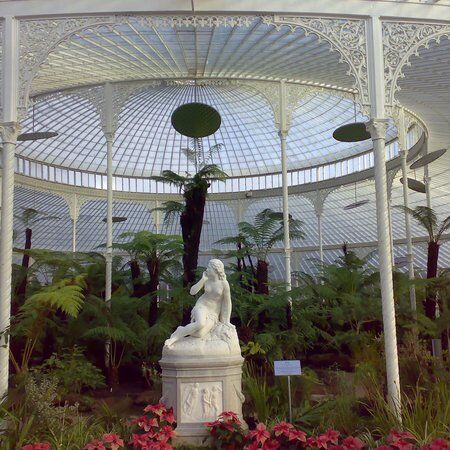
Inside the Botanic Gardens the palace was initially used as an exhibition and concert venue, but it underwent a transformation in the 1880s to become a sanctuary for growing plants. Benjamin Disraeli and William Ewart Gladstone, were installed as rectors of the University of Glasgow inside the Kibble Palace, marking its cultural significance.
In 2004, a £7 million restoration effort was launched, which involved dismantling the structure to address corrosion of its ironwork. Upon its reopening to the public in November 2006, Kibble Palace looked brand new, displaying the national collection of tree ferns alongside rare and endangered tropical plants once more.
The Friends of Glasgow Botanic Gardens
Managed with care and dedication, the Glasgow Botanic Gardens have garnered prestigious accolades, including the coveted Green Flag Award in 2011. The Friends of Glasgow Botanic Gardens, a charitable organisation established in 1994, play a crucial role in supporting the Gardens' educational and conservation efforts, fundraising to enhance plant collections and facilitate educational programs for all ages.
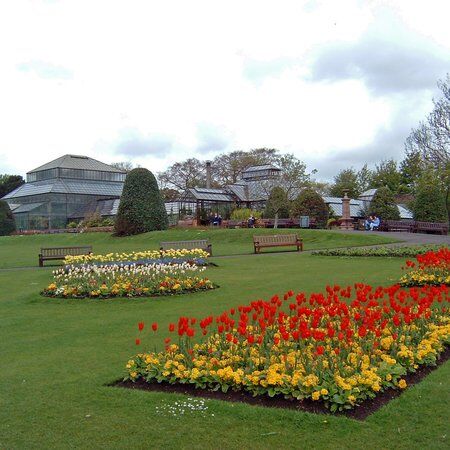
Education and Training Programmes
The Certificate in Practical Horticulture is a program open to all aspiring horticulturists seeking to enhance their skills and knowledge. The Friends of the Gardens play a vital role in supporting this initiative, empowering individuals to pursue their passion for gardening and botanical studies.
Throughout the year, guest speakers also share their knowledge on specialised plant collections, horticultural practices, and environmental issues. The highlight of this program is the annual Kibble Lecture in April, which draws enthusiasts from far and wide.

In addition to these events, group visits to renowned gardens across Scotland are facilitated, providing members with opportunities for inspiration and discovery. Recently, public tours of the Gardens were made available so visitors can explore the gardens firsthand.
Moreover, a commitment to fostering a culture of volunteerism within the Gardens is evident, offering training and opportunities for individuals to contribute to the educational activities and garden maintenance. Through access to the Gardens' extensive library and collaborative projects, such as The Drumlin magazine, efforts are made to cultivate a community of lifelong learners, sharing knowledge and insights with schools, visitors, and enthusiasts alike.
To explore other botanic gardens such as Oxford Botanic Gardens or the National Botanic Gardens in Ireland check out our blog.
Discover More about Glasgow with CityDays
Ready to discover more of what Glasgow has to offer?
CityDays have a brand new treasure and scavenger hunt in Glasgow which combines the fun of an escape room with the historic facts and whimsical trivia of a walking tour!
Take the stress out of planning your visit to Glasgow and book your adventure today!
Not visiting Glasgow this time? Don’t worry, you’ll find us all over the world.
